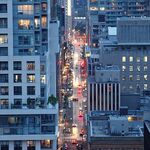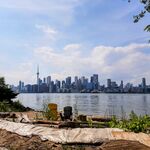I see your point, Ladies Mile, but I don't necessarily agree.
The halcyon days of the Yonge street strip, from the mid-1960s until the early 1980s, was always about a certain urban character rather than aesthetic. The aesthetic was a response to that character, and almost nothing exists of the original. Retaining the historic facades is, to me, a bit dishonest, since they never played any role in the Yonge street we knew and loved (they were covered up in neon ads), and, with few exceptions (like that Moorish building beside Zanzibar) are not particularly noteworthy.
Yonge street's character is long gone largely because it was of a time and place that is long gone. The Yonge street of Going down the Road was sort of that ne plus ultra of North American cosmopolitanism of the late 1960s which involved a comingling of the intellectual and the carnal pursuits: late night book and record stores adjacent to porno theatres; the porno theatres, however, showing films that might end up to be cult classics, while the book stores dabbling in their share of smut. When I think about it, Playboy magazine captured the essence of this culture very well, with its topless photos sandwiched between interviews with notable authors. It was all very exciting back in those days, but it doesn't hold up in today's world where sex, sexuality and intellectualism are conceived very differently.
Other than the Bohemian village around Gerrard street which was demolished to make way for hospital loading docks and parking lots, it's hard to think of a neighbourhood which has had the life sucked out of it quite as much as the Yonge street strip. Adma's right: it's low end mall retail in mediocre buildings; whatever commercialism is left over is of the crassest, most unimaginative kind (backlit posters for American apparel that are basically newspaper ads blown up 500X and printed on vinyl). I think Yonge between Dundas and Gerrard is the second cheesiest street in Ontario after Clifton Hill, and at least in the latter's case it admits to being a tourist trap in a tourist trap city, without ever having had the distinction of being the main commercial street for a major city.




